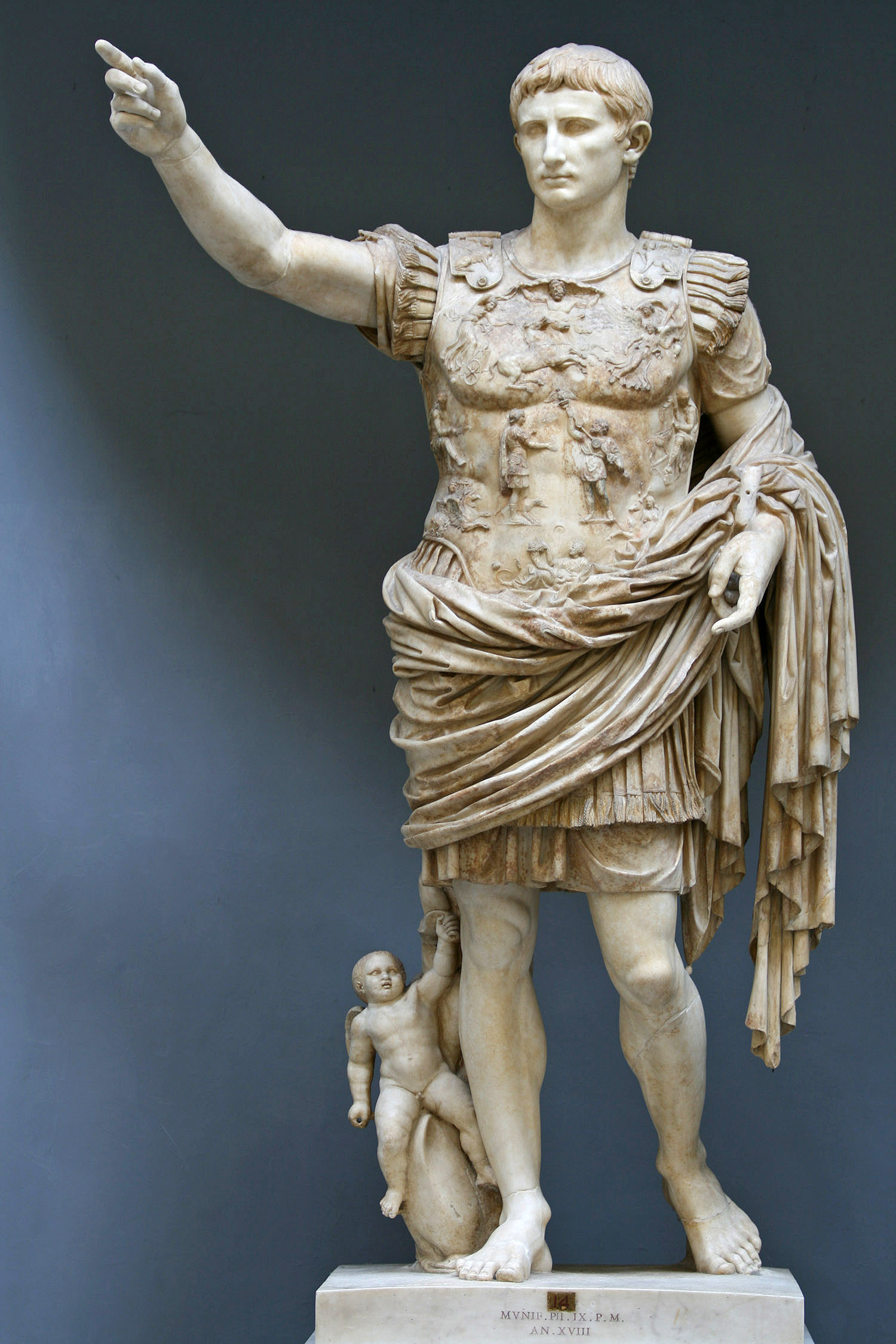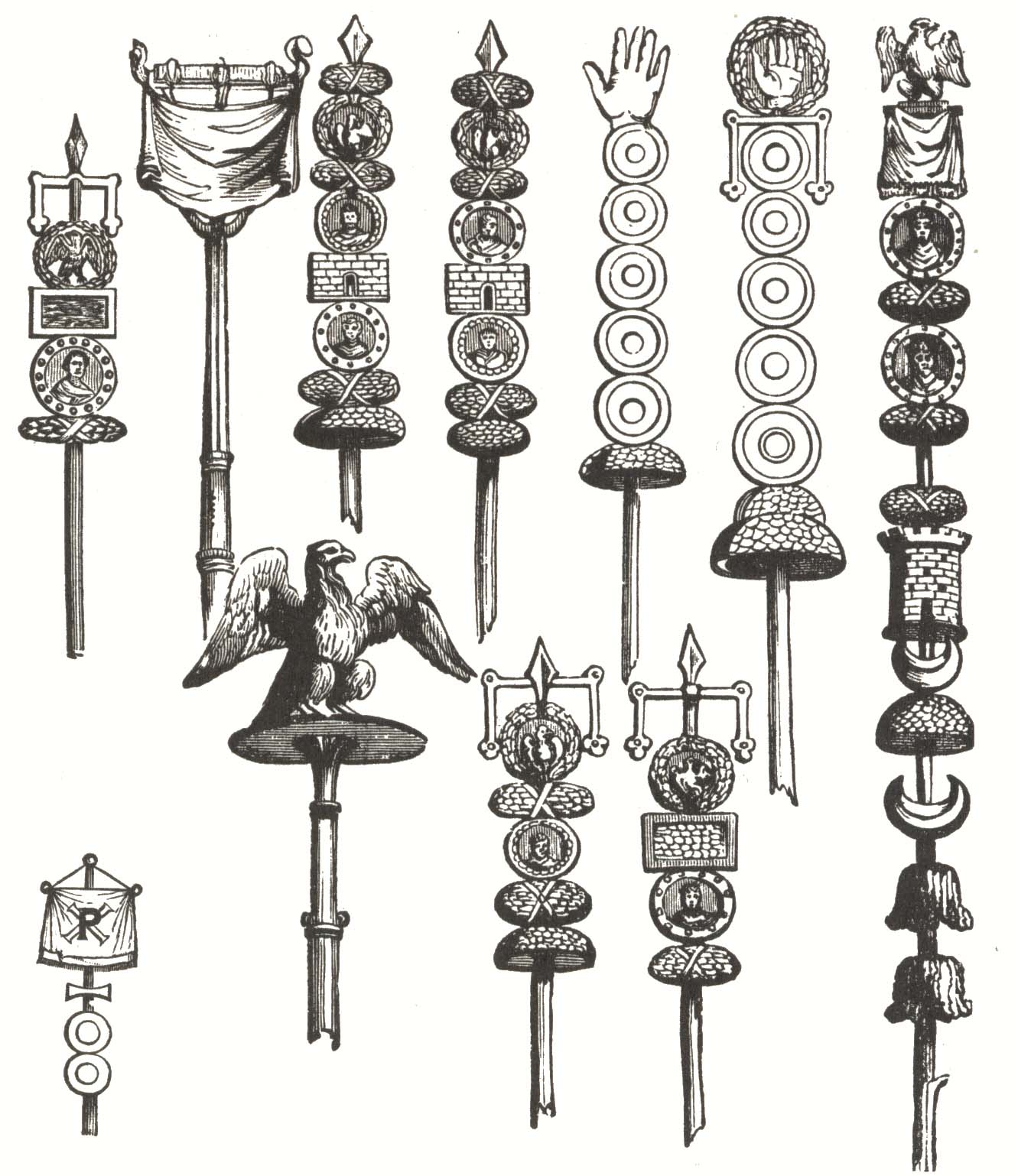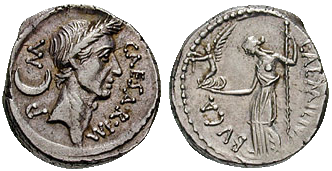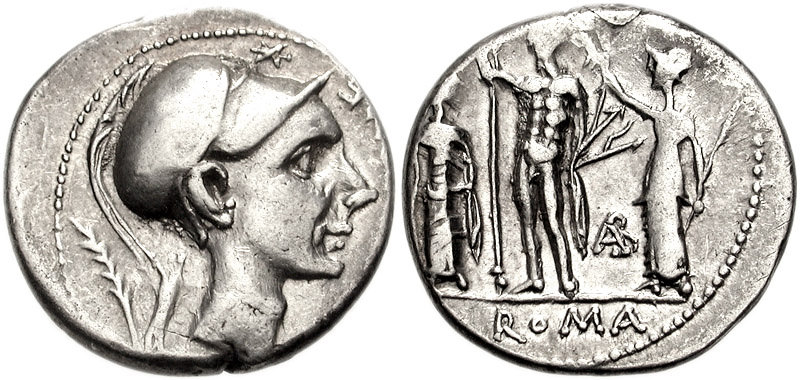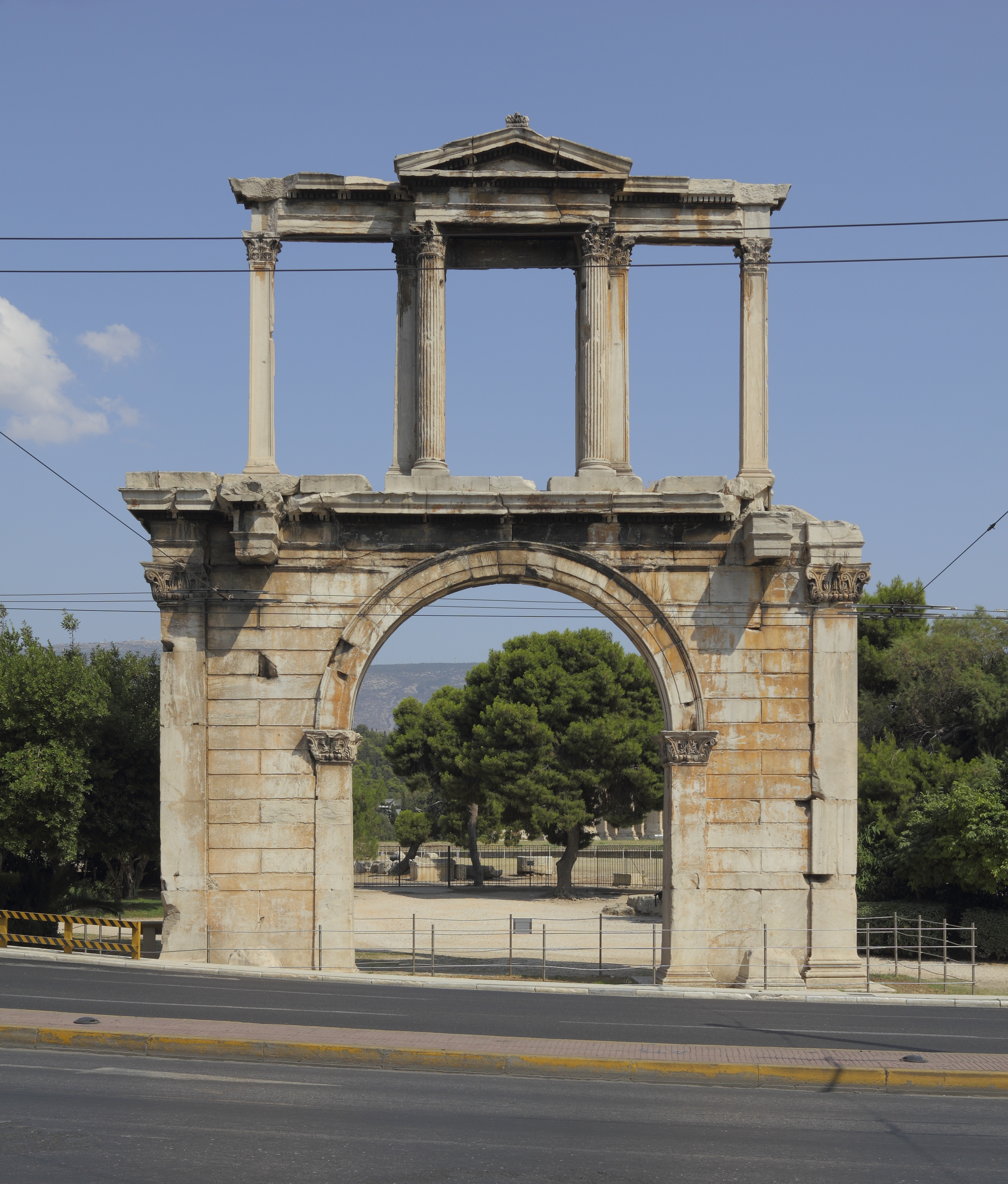|
Imperial Roman Army
The Imperial Roman Army was the military land force of the Roman Empire from 27 BC to 476 AD, and the final incarnation in the long history of the Roman army. This period is sometimes split into the Principate (27 BC – 284 AD) and the Dominate (284–476) periods. Under Augustus (), the army consisted of Roman legion, legions, eventually and also ''Numerus (Roman military unit), numeri''. By the end of Augustus' reign, the imperial army numbered some 250,000 men, equally split between 25 legions and 250 units of auxiliaries. The numbers grew to a peak of about 450,000 by 211, in 33 legions and about 400 auxiliary units. By then, auxiliaries outnumbered legionaries substantially. From this peak, numbers probably underwent a steep decline by 270 due to plague and losses during multiple major invasions by the Germanic Tribal Folk. Numbers were restored to their early 2nd-century level of c. 400,000 (but probably not to their 211 peak) under Diocletian (r. 284–305). After the E ... [...More Info...] [...Related Items...] OR: [Wikipedia] [Google] [Baidu] |
Vexilloid Of The Roman Empire
A vexilloid is any flag-like (vexillary) object used by countries, organisations, or individuals as a form of representation other than flags. American vexillologist Whitney Smith coined the term ''vexilloid'' in 1958, defining it as This includes vexilla, banderoles, pennons, streamers, heraldic flags, standards, and gonfalons. Examples include the Sassanid battle standard Derafsh Kaviani, and the standards of the Roman legions such as the eagle of Augustus Caesar's Xth legion and the dragon standard of the Sarmatians; the latter was allowed to fly freely in the wind, carried by a horseman, but depictions suggest that it bore more similarity to an elongated dragon kite than to a simple flag. The use of flags replaced the use of vexilloids for general purposes during late medieval times between about 1100 to about 1400. However, vexilloids still remain in use for specialised purposes, such as for some military units or to symbolise various organisations such as frater ... [...More Info...] [...Related Items...] OR: [Wikipedia] [Google] [Baidu] |
Augustus
Gaius Julius Caesar Augustus (born Gaius Octavius; 23 September 63 BC – 19 August AD 14), also known as Octavian (), was the founder of the Roman Empire, who reigned as the first Roman emperor from 27 BC until his death in AD 14. The reign of Augustus initiated an Roman imperial cult, imperial cult and an era of regional hegemony, imperial peace (the or ) in which the Roman world was largely free of armed conflict. The Principate system of government was established during his reign and lasted until the Crisis of the Third Century. Octavian was born into an equites, equestrian branch of the plebeian Octavia gens, Octavia. Following his maternal great-uncle Julius Caesar's assassination of Julius Caesar, assassination in 44 BC, Octavian was named in Caesar's will as his Adoption in ancient Rome, adopted son and heir, and inherited Caesar's name, estate, and the loyalty of his legions. He, Mark Antony, and Marcus Lepidus formed the Second Triumvirat ... [...More Info...] [...Related Items...] OR: [Wikipedia] [Google] [Baidu] |
Peregrinus (Roman)
In the early Roman Empire, from 30 BC to AD 212, a ''peregrinus'' () was a free provincial subject of the Empire who was not a Roman citizen. ''Peregrini'' constituted the vast majority of the Empire's inhabitants in the 1st and 2nd centuries AD. In AD 212, all free inhabitants of the Empire were granted citizenship by the '' Constitutio Antoniniana'', with the exception of the '' dediticii'', people who had become subject to Rome through surrender in war, and freed slaves.Giessen Papyrus, 40,7-9 "I grant to all the inhabitants of the Empire the Roman citizenship and no one remains outside a civitas, with the exception of the dediticii" The Latin '' peregrinus'' "foreigner, one from abroad" is related to the Latin adverb ''peregre'' "abroad", composed of ''per-'' "through" and an assimilated form of ''ager'' "field, country", i.e., "over the lands"; the ''-e'' is an adverbial suffix. During the Roman Republic, the term ''peregrinus'' simply denoted any person who did not hold Rom ... [...More Info...] [...Related Items...] OR: [Wikipedia] [Google] [Baidu] |
Roman Army Of The Mid-Republic
The Roman army of the mid-Republic, also called the manipular Roman army or the Polybian army, refers to the armed forces deployed by the mid-Roman Republic, from the end of the Samnite Wars (290 BC) to the end of the Social War (91–88 BC), Social War (88 BC). The first phase of this army, in its Maniple (military unit), manipular structure (290–c. 130 BC), is described in detail in the ''The Histories (Polybius), Histories'' of the ancient Greek historian Polybius, writing before 146 BC. The central feature of the mid-Republican army was the manipular organisation of its battle line. Instead of a single, large mass (the phalanx formation, phalanx) as in the Early Roman army, the Romans now drew up in three lines () consisting of small units (maniples) of 120 men, arrayed in chessboard fashion, giving much greater tactical strength and flexibility. This structure was probably introduced in c. 300 BC during the Samnite Wars. Also probably dating from this period was the regula ... [...More Info...] [...Related Items...] OR: [Wikipedia] [Google] [Baidu] |
Velites
''Velites'' (; : ) were a class of infantry in the Roman army of the mid-Republic from 211 to 107 BC. ''Velites'' were light infantry and skirmishers armed with javelins (), each with a 75cm (30 inch) wooden shaft the diameter of a finger, with a 25cm (10 inch) narrow metal point, to fling at the enemy. They also carried short thrusting swords, or gladius, ''gladii'', for use in melee. They rarely wore armour as they were the youngest and poorest soldiers in the legion and could not afford much equipment. They did carry small wooden shields called ''Parma (shield), parma'' for protection, and wore headdresses made from wolf skins so their brave deeds could be recognized. The ''velites'' were placed at the front partly for tactical reasons, and also so that they had the opportunity to secure glory for themselves in single combat. ''Velites'' did not form their own units; a number of them were attached to each Maniple (military unit), maniple of ''hastati'', ''principes'' and ''tr ... [...More Info...] [...Related Items...] OR: [Wikipedia] [Google] [Baidu] |
Roman Army Of The Late Republic
The Roman army of the late Republic refers to the armed forces deployed by the late Roman Republic, from the beginning of the first century BC until the establishment of the Imperial Roman army by Augustus in 30 BC. Shaped by major social, political, and economic change, the late Republic saw the transition from the Roman army of the mid-Republic, which was a temporary levy based solely on the conscription of Roman citizens, to the Imperial Roman army of the Principate, which was a standing, professional army based on the recruitment of volunteers. Continuous expansion, wars, conflicts, and the acquisition of a growing, overseas territory led to an increasing degree of professionalism within the army. The late-Republic saw much of its action taking place within the Roman borders and between Roman commanders as they vied for control of the Republic. There was a significant intertwining of military and politics in the acquisition and maintenance of power. After the Social War, ... [...More Info...] [...Related Items...] OR: [Wikipedia] [Google] [Baidu] |
Hadrian
Hadrian ( ; ; 24 January 76 – 10 July 138) was Roman emperor from 117 to 138. Hadrian was born in Italica, close to modern Seville in Spain, an Italic peoples, Italic settlement in Hispania Baetica; his branch of the Aelia gens, Aelia ''gens'', the ''Aeli Hadriani'', came from the town of Atri, Abruzzo, Hadria in eastern Italy. He was a member of the Nerva–Antonine dynasty. Early in his political career, Hadrian married Vibia Sabina, grandniece of the ruling emperor, Trajan, and his second cousin once removed. The marriage and Hadrian's later succession as emperor were probably promoted by Trajan's wife Pompeia Plotina. Soon after his own succession, Hadrian had four leading senators unlawfully put to death, probably because they seemed to threaten the security of his reign; this earned him the senate's lifelong enmity. He earned further disapproval by abandoning Trajan's expansionist policies and territorial gains in Mesopotamia (Roman province), Mesopotamia, Assyria ( ... [...More Info...] [...Related Items...] OR: [Wikipedia] [Google] [Baidu] |
Roman Province
The Roman provinces (, pl. ) were the administrative regions of Ancient Rome outside Roman Italy that were controlled by the Romans under the Roman Republic and later the Roman Empire. Each province was ruled by a Roman appointed as Roman governor, governor. For centuries, it was the largest administrative unit of the foreign possessions of ancient Rome. With the administrative reform initiated by Diocletian, it became a third level administrative subdivision of the Roman Empire, or rather a subdivision of the Roman diocese, imperial dioceses (in turn subdivisions of the Praetorian prefecture, imperial prefectures). History A province was the basic and, until the Tetrarchy (from AD 293), the largest territorial and administrative unit of the empire's territorial possessions outside Roman Italy. During the republic and early empire, provinces were generally governed by politicians of Roman senate, senatorial rank, usually former Roman consul, consuls or former praetors. ... [...More Info...] [...Related Items...] OR: [Wikipedia] [Google] [Baidu] |
Praetorian Guard
The Praetorian Guard (Latin language, Latin: ''cohortes praetoriae'') was the imperial guard of the Imperial Roman army that served various roles for the Roman emperor including being a bodyguard unit, counterintelligence, crowd control and gathering military intelligence. During the Roman Republic, the Praetorian Guards were escorts for high-ranking political officials (Roman Senate, senators and procurator (ancient Rome), procurators) and were bodyguards for the senior officers of the Roman legions. In 27 BC, after Rome's transition from republic to empire, the first emperor of Rome, Augustus, designated the Praetorians as his personal security escort. For three centuries, the guards of the Roman emperor were also known for their palace intrigues, by whose influence upon imperial politics the Praetorians could overthrow an emperor and then proclaim his successor as the new ''Caesar (title), caesar'' of Rome. In AD 312, Constantine the Great disbanded the and destroyed their ... [...More Info...] [...Related Items...] OR: [Wikipedia] [Google] [Baidu] |
Danube
The Danube ( ; see also #Names and etymology, other names) is the List of rivers of Europe#Longest rivers, second-longest river in Europe, after the Volga in Russia. It flows through Central and Southeastern Europe, from the Black Forest south into the Black Sea. A large and historically important river, it was once a frontier of the Roman Empire. In the 21st century, it connects ten European countries, running through their territories or marking a border. Originating in Germany, the Danube flows southeast for , passing through or bordering Austria, Slovakia, Hungary, Croatia, Serbia, Romania, Bulgaria, Moldova, and Ukraine. Among the many List of cities and towns on the river Danube, cities on the river are four national capitals: Vienna, Bratislava, Budapest, and Belgrade. Its drainage basin amounts to and extends into nine more countries. The Danube's longest headstream, the Breg (river), Breg, rises in Furtwangen im Schwarzwald, while the river carries its name from its ... [...More Info...] [...Related Items...] OR: [Wikipedia] [Google] [Baidu] |
Rhine
The Rhine ( ) is one of the List of rivers of Europe, major rivers in Europe. The river begins in the Swiss canton of Graubünden in the southeastern Swiss Alps. It forms part of the Swiss-Liechtenstein border, then part of the Austria–Switzerland border, Swiss-Austrian border. From Lake Constance downstream, it forms part of the Germany-Switzerland border, Swiss-German border. After that the Rhine defines much of the Franco-German border. It then flows in a mostly northerly direction through the German Rhineland. Finally, the Rhine turns to flow predominantly west to enter the Netherlands, eventually emptying into the North Sea. It drains an area of 185,000 km2. Its name derives from the Gaulish language, Gaulish ''Rēnos''. There are two States of Germany, German states named after the river, North Rhine-Westphalia and Rhineland-Palatinate, in addition to several districts of Germany, districts (e.g. Rhein-Sieg-Kreis, Rhein-Sieg). The departments of France, department ... [...More Info...] [...Related Items...] OR: [Wikipedia] [Google] [Baidu] |
Diocletian
Diocletian ( ; ; ; 242/245 – 311/312), nicknamed Jovius, was Roman emperor from 284 until his abdication in 305. He was born Diocles to a family of low status in the Roman province of Dalmatia (Roman province), Dalmatia. As with other Illyrian emperors, Illyrian soldiers of the period, Diocles rose through the ranks of the military early in his career, serving under Aurelian and Probus (emperor), Probus, and eventually becoming a Roman cavalry, cavalry commander for the army of Emperor Carus. After the deaths of Carus and his son Numerian on a campaign in Sasanian Empire, Persia, Diocles was proclaimed emperor by the troops, taking the name "Diocletianus". The title was also claimed by Carus's surviving son, Carinus, but he was defeated by Diocletian in the Battle of the Margus. Diocletian's reign stabilized the empire and ended the Crisis of the Third Century. He initiated the process of the Roman Empire split and appointed fellow officer Maximian as ''Augustus (title), Augu ... [...More Info...] [...Related Items...] OR: [Wikipedia] [Google] [Baidu] |
